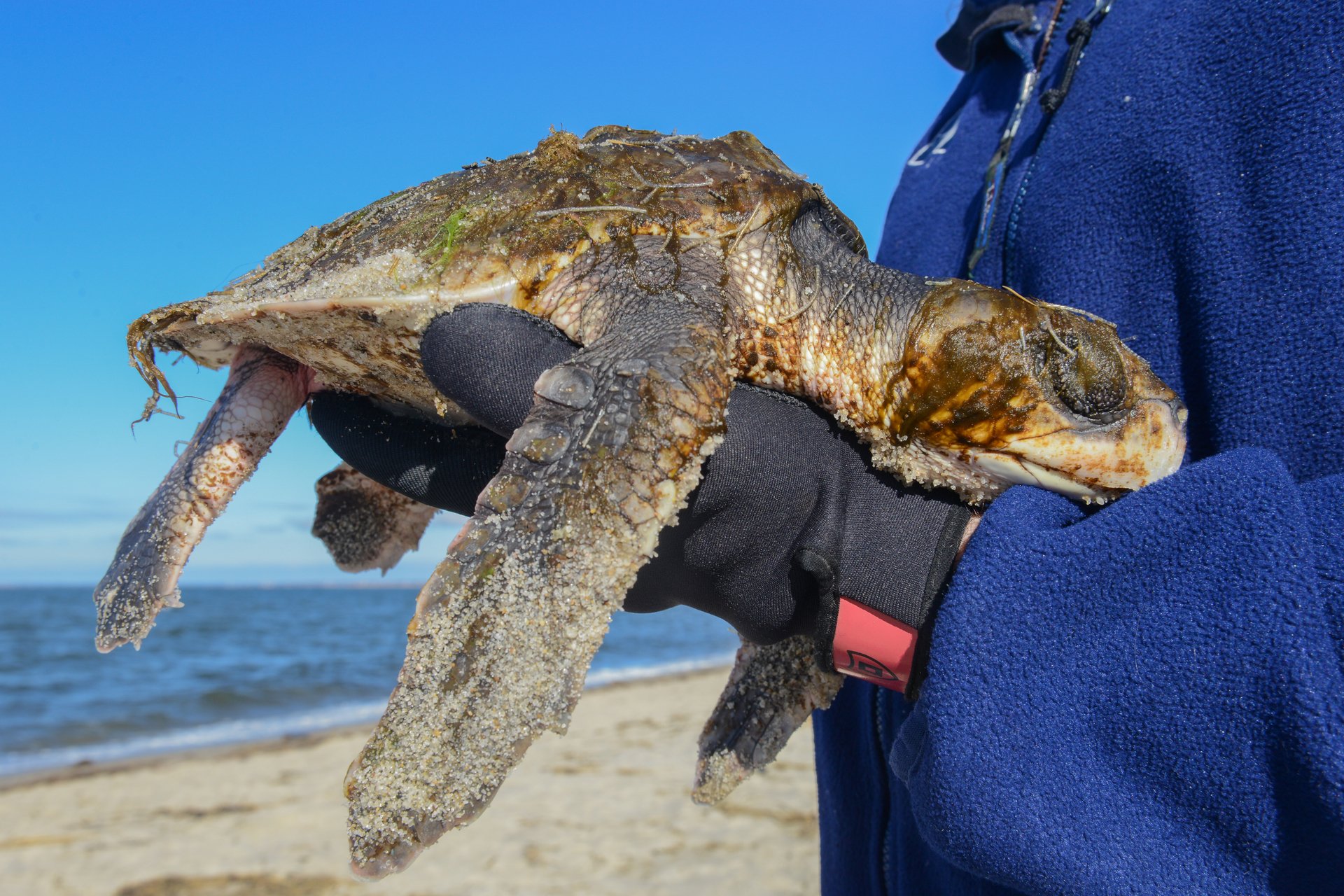Coming upon a Snapping Turtle—especially one lumbering across a road or lawn—often leaves people unsure of what to do. Though their prehistoric look may seem intimidating, these reptiles play an important role in the ecosystem and usually just need a bit of space.
Here’s what to know and do if you encounter a snapping turtle.
When & Why You Might See a Snapping Turtle on Land
Snapping Turtles spend most of their time in freshwater ponds, lakes, and wetlands, but they venture onto land in late spring and early summer to nest. Females may travel surprising distances to find the right spot to lay their eggs. So, if you see a turtle in an unexpected place, it’s likely on a purposeful mission and doesn’t need help—just patience.
By late August through October, Snapping Turtle hatchlings begin to emerge—each one just 1–2 inches long. Most are so small they go unnoticed, but if you spot one, follow the same hands-off approach as you would with an adult. Never take a hatchling home, no matter how cute it looks.
Do's & Don't for Interacting with Snapping Turtles
Snapping Turtles are powerful animals with strong jaws. Unlike other turtles, they can’t fully retreat into their shells, so they may snap when they feel threatened. For your safety and the turtle’s, it’s best to observe from a distance.
If a turtle is crossing a road and is in immediate danger from traffic, you can help it—but do so carefully:
- Only intervene if it’s safe for you. Don’t put yourself in harm’s way, especially if you find a turtle in the road.
- Use an object to guide the turtle. The safest (and only recommended) way to help a snapping turtle is to gently guide it with a long object like a broom or board. Do not lift the turtle by its tail—this can injure the turtle.
- Guide it in the direction it’s already heading. Turtles have strong instincts and will likely try again if turned around.
Snapping Turtles Play a Valued Role in Our Ecosystem
Though they may look fierce, Snapping Turtles are shy and solitary. They help keep ecosystems healthy through their opportunistic diets, cleaning up carrion (dead animals) and controlling populations of fish and invertebrates. Their presence is a sign of a functioning wetland—and their survival depends on us allowing them to complete their life cycles in peace.
How You Can Help Snapping Turtles
Snapping turtles can live for decades—some over 50 years—and females often return to the same nesting areas year after year. By leaving them undisturbed, you’re helping protect generations to come.
- Drive carefully near wetlands, especially in spring and early summer. Keep an eye out for turtles crossing roads.
- Educate others. Many people mistakenly believe Snapping Turtles are dangerous or pests. Sharing knowledge can shift perceptions.
- Support protected habitats. Mass Audubon’s wildlife sanctuaries provide essential nesting and feeding grounds for snapping turtles. Become a member today to support the sanctuaries that these turtles call home.
Snapping Turtles may not win any beauty contests, but they are remarkable, resilient creatures that deserve our respect. The best thing you can do when you see one? Give it space—and maybe a little quiet encouragement on its way.
Stay Connected
Don't miss a beat on all the ways you can get outdoors, celebrate nature, and get involved.







